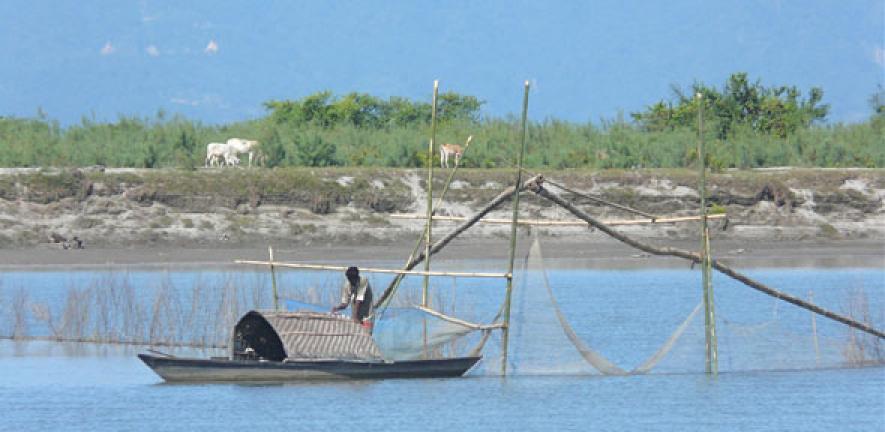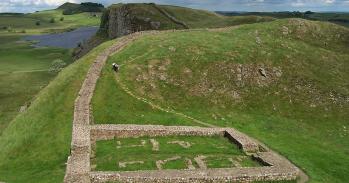
Bhaskar Vira (Department of Geography and University of Cambridge Conservation Research Institute) discusses ways of dealing with the crisis affecting India’s water resources.
Bhaskar Vira (Department of Geography and University of Cambridge Conservation Research Institute) discusses ways of dealing with the crisis affecting India’s water resources.
India is facing one of its most serious droughts in recent memory – official estimates suggest that at least 330m people are likely to be affected by acute shortages of water. As the subcontinent awaits the imminent arrival of the monsoon rains, bringing relief to those who have suffered the long, dry and exceptionally warm summer, the crisis affecting India’s water resources is high on the public agenda.
Unprecedented drought demands unconventional responses, and there have been some fairly unusual attempts to address this year’s shortage. Perhaps most dramatic was the deployment of railway wagons to transport 500,000 litres of water per day across the Deccan plateau, with the train traversing more than 300km to provide relief to the district of Latur in Maharashtra state.
The need to shift water on this scale sheds light on the key issue that makes water planning in the Indian subcontinent so challenging. While the region gets considerable precipitation most years from the annual monsoon, the rain tends to fall in particular places – and for only a short period of time (about three months). This water needs to be stored, and made to last for the entire year.
In most years, it also means that there is often too much water in some places, resulting in as much distress due to flooding as there currently is due to drought. So there is a spatial challenge as well – water from the surplus regions needs to reach those with a shortfall, and the water train deployed in Maharashtra is one attempt to achieve this.
Grand ambitions
The current crisis has led the Indian government to announce that it hopes to resurrect an ambitious plan to try and link the major river basins of the country, under the Interlinking of Rivers (ILR) Project. The scale and magnitude of this exercise, both financial (it is estimated to cost more than £100 billion) and in engineering terms (involving the transfer of 174 billion cubic metres of water annually) is unprecedented.
Critics suggest that it is unlikely to work and is likely to create further ecological and social disruption, especially due to the uncertainties in weather and precipitation patterns due to climate change. There is a risk that other alternatives, perhaps less dramatic in their scope, might be neglected in the rush for the big headline-grabbing schemes.
A specific way forward might be to work more directly with natural processes to secure the regeneration of water sources at the local level. In the dry plains, this involves the revitalisation of aquifers and the replenishment of groundwater through recharge during the monsoon, as has been attempted already in some regions. In the hilly areas, there is considerable scope for investment in spring recharge and source sustainability, as has been undertaken on a significant scale in the Himalayan state of Sikkim.
Our current research is examining the need to invest in source protection and sustainability in detail, especially in the Himalayas, which have been described as the “Water Towers of Asia”. Urbanisation trends in the region suggest that there will be a growing number of small towns and settlements that will need water infrastructure to meet their needs – and there is a critical need to secure these water sources.
Deforestation, land conversion and degradation, as well as urban encroachment due to illegal construction, pose major threats to the water bearing capacity of the Himalayan landscape. There is an urgent need to invest in the identification, protection and restoration of these “critical water zones”.
Potential for conflict
The Himalayan context also demonstrates the transboundary nature of the water issue. The Hindu Kush Himalayan region extends across eight countries, from Afghanistan to Myanmar, and supports ten major river systems, potentially affecting the lives of more than 1.5 billion people. Cooperation across political boundaries is vital to manage these fragile resources, further threatened by the uncertain impacts of climate change.

There is some hope, despite three major wars since independence, that India and Pakistan have managed to maintain some semblance of cooperation under the Indus Waters Treaty, which was negotiated in 1960. However, analysts suggest that regional conflict over water is going to worsen – and much depends on the role of China, which is the dominant upstream water controller in the region.
The other key response is managing water demand – and making explicit choices over alternative uses. This year, the shifting of Indian Premier League cricket matches away from water-scarce Maharashtra was a high-profile, though somewhat symbolic, example of an explicit prioritisation of water use.
More generally, though, managing water demands has rarely been prioritised. Water-thirsty crops – sugarcane, for example – dominate the landscape in the dry regions of Marathwada and Vidarbha in Maharashtra. Farmers receive subsidies on energy, which allow them to pump dry the already-depleted aquifers in other parts of the country. And, there are important issues of distributional equity – the poor in many urban contexts pay significantly more per litre for erratic and unreliable water, while their richer neighbours luxuriate in swimming pools and spend weekends on plush golf greens.
Water is an issue that cuts across all aspects of social and economic life in India. Compartmentalised responses are unlikely to be adequate to address the current crises. There is a need for an integrated approach, which addresses source sustainability, land use management, agricultural strategies, demand management and the distribution and pricing of water. With growing pressures due to climate change, migration and population growth, creative and imaginative governance is needed to manage this precious resource.
Bhaskar Vira, Reader in Political Economy at the Department of Geography and Fellow of Fitzwilliam College; Director, University of Cambridge Conservation Research Institute, University of Cambridge
This article was originally published on The Conversation. Read the original article.
The opinions expressed in this article are those of the individual author(s) and do not represent the views of the University of Cambridge.

The text in this work is licensed under a Creative Commons Attribution 4.0 International License. For image use please see separate credits above.




